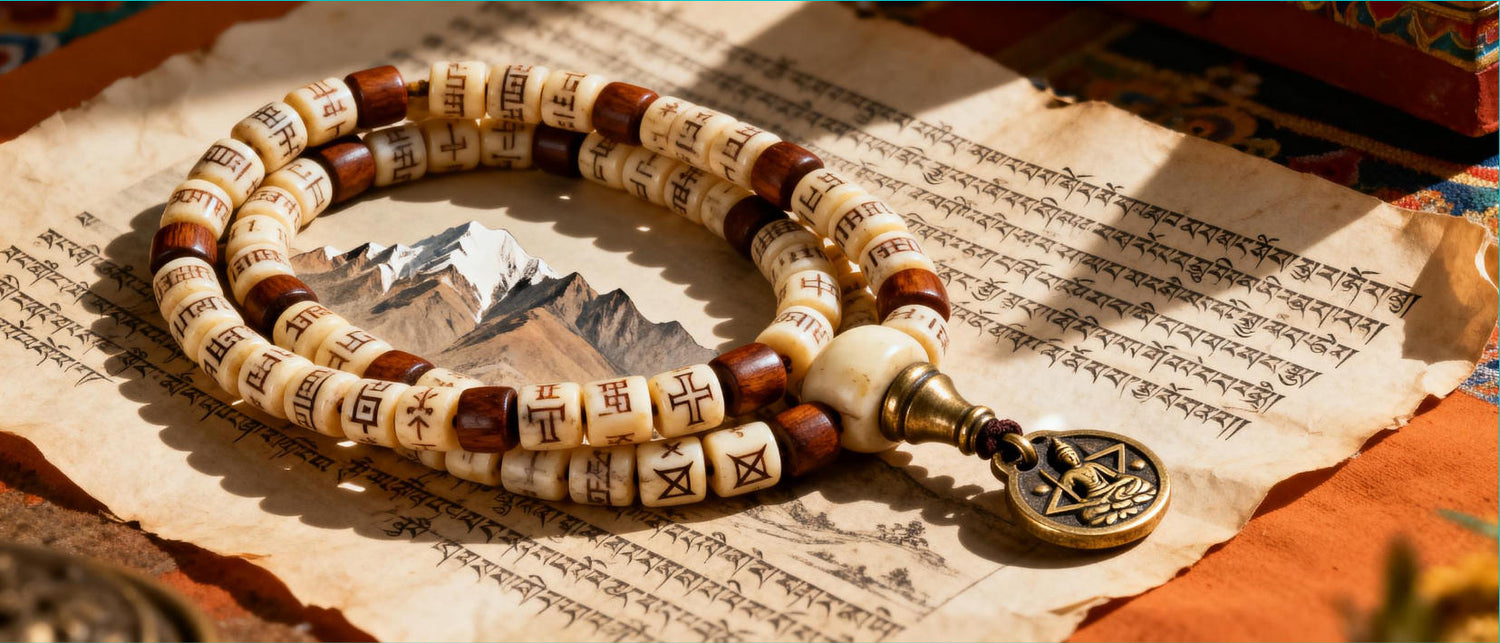
From Stress to Stillness: Real Stories of Transformation with Mala Practice
We speak of energy, intention, and peace. But what does this actually look like in a human life, with its deadlines, its heartbreaks, and its daily demands?
The proof is in the experiences of people. They have made a mala part of their daily lives and have changed for the better. These are not just stories. They show how a simple tool can change our relationship with ourselves.
Elena: The CEO Who Replaced Burnout with Breath
Elena's identity was her productivity. As a startup founder, her mind was a browser with 100 tabs open at once. Sleep was elusive, replaced by a cycle of anxiety and exhaustion. A gifted Amethyst Mala felt like a beautiful, but foreign, object.
Her transformation began not with an hour of meditation, but with three breaths. She kept the mala on her desk. Every time she felt the familiar surge of panic before a meeting, she would pick it up.
"I didn't even chant," she shares. "I'd just hold the cool, smooth beads and take three deliberate breaths, moving one bead per breath. It was a circuit breaker."
Those three-bead moments became islands of sanity in a chaotic sea. Over weeks, the practice expanded. The mala became a symbol of a new choice. It represents the choice to pause, to breathe, and to lead calmly instead of in a crisis.
"It didn't change my workload," Elena says, "but it completely changed my experience of it. I'm now responding from a place of clarity I didn't know I had."
David: The Artist Who Found His Voice After Loss
After a profound personal loss, David's creativity vanished. His studio, once a sanctuary, felt empty and silent. A well-meaning friend gave him a Lapis Lazuli Mala, mentioning its connection to truth and self-expression. For weeks, it sat on his shelf.
One morning, in the heavy quiet, he took it down. He didn't know any mantras, so he simply sat, holding the beads, and with each one, he breathed in the word "Truth" and breathed out the word "Fear." "Tears started flowing with the first few beads," David recalls. "The mala helped me feel the full weight of my grief without letting it destroy me."
He began a daily practice of this simple breath-and-word meditation. The deep blue of the lapis, flecked with gold, became a visual anchor for his inner sky. Slowly, almost imperceptibly, the urge to create returned.
"The mala didn't fill the void, but it helped me find my voice within it. I dedicate my new collection to that journey from silence to expression.
Sophie: The Parent Who Built a Sanctuary in 5 Minutes
Sophie loved her family very much. However, the constant needs of her two young children made her feel overwhelmed and mentally exhausted. "I had no time for a 30-minute meditation," she explains. Her Rose Quartz Mala became her secret tool for micro-sanctuary.
She began a ritual of five minutes after the kids were in bed. She would sit on her bedroom floor and hold the soft pink beads. For 27 beads, which is a quarter mala, she would breathe in "Love" and breathe out "Thanks." "I wasn't trying to clear my mind." I was just filling it with a feeling other than exhaustion."
This small act became a non-negotiable reset. "It allowed me to close the chapter of the day's chaos and reconnect with myself as something more than just a caregiver. That five minutes with the rose quartz made me a more present, patient mother for the entire next day. It was a radical act of self-love that ended up nourishing everyone."
The Common Thread
Elena, David, and Sophie did not become master meditators overnight. They did not retreat to caves. They found a way to let the mala meet them exactly where they were—in their office, in their grief, in their overwhelm.
Their stories show how versatile this ancient tool is. It acts as a mirror for our feelings. It serves as an anchor during tough times. It gently guides us back to the calm that has always been inside us.
Your story awaits your pen to write it. What chapter will your mala help you begin?
FAQs: Starting Your Own Mala Practice
Q: I'm so busy. How can I find time for a mala practice?
A: As these stories show, the most powerful practices often start tiny. It is much better to spend one minute on conscious breathing with your mala each day. This is more effective than planning for an hour you will never have. Consistency trumps duration.
Q: I'm not good at meditating. Will a mala still help?
A: "Good at meditating" is a myth. A wandering mind is normal.
The mala is precisely the tool to help with this! It gives your busy mind a simple task.
You can feel the beads, count your breaths, or repeat a word. This helps you gently bring your focus back. It's a tool for the "not-good" days.
Q: How long before I feel a difference?
A: This is unique to each person. Some, like Elena, feel an immediate shift from a single, mindful pause. For others, like David, the changes are gradual and deep.
Don't look for lightning bolts. Notice small changes. You might respond to stress more calmly.
You may remember to be patient for a moment. You could take a deep breath when you usually wouldn't. These are the real signs of transformation.





